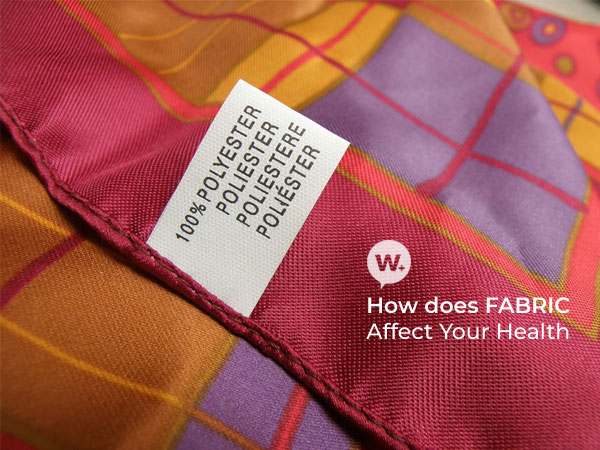While around half of all Indians spend ₹500 to₹2,500 on clothes each month, many women may not think twice about the fabric involved or the effects it can have on their lives. It may surprise you to learn that the fabric of your clothes can easily cause skin irritation, bacterial infections, and can even negatively impact the environment. Such a profound impact makes your choice of clothing imperative throughout your day to day life, as well as throughout changes such as pregnancy in order to ensure optimal health and comfort. Whether you prefer silk or cashmere, knowing about the effect fabric has on your life can and should influence your next purchase for the sake of your health and wellbeing.
Fabric and your skin
Whether you notice it or not, the clothes you wear have a lot to do with your skin. For example, wool clothing can irritate the skin, and can even trigger eczema. Fabrics like silk are known for being beneficial to the wearer, though they aren’t the best in terms of being breathable or for wicking moisture, meaning that wearing them while sweating isn’t the best (or most comfortable) idea. This is especially important for women’s health, as non-breathable materials like silk in underwear can cause yeast or bacterial infections in women.
Other fabrics, such as spandex, can cause skin irritation or even a rash in some instances, especially since it tends to be close to the skin. It’s important to note that some people can even experience allergies from their clothing, which may have to do with the detergent that is used when washing them. For such reasons, the best fabrics for your skin tend to be breathable, comfortable, and hypoallergenic clothing – like cotton, for example.
Perhaps one of the biggest ways the fabric of your clothes has an impact on your life (as well as the lives of others) is through the environment. This is because some fabrics, such as cotton, uses pesticides in the growing process that can pollute water. In fact, cotton is known as one of the most pesticide-intensive crops in the entire world. Other fabrics, such as polyester and acrylic fabrics are known to contain tiny microfibers of plastic, that can, unfortunately, make its way into the world’s oceans when washed.
In fact, such microplastics have been found in some fish, proving just how negative of an effect it has on the environment and even animals themselves. Speaking of animals, the wool industry is known for animal cruelty when it comes to the sheep involved, and other animals that are used to make fashion statements – even though fur and such isn’t directly considered fabric – is also a contributor to animal cruelty in the clothing industry as well, proving the dark side of clothing to expand much further than we realize when at the store.
With such a negative impact on the environment, it’s more than important to check the label on that shirt or jacket you’re about to buy in order to ensure you’re getting a humane and eco-friendly item – though that’s not the only way to ensure you’re buying in a positive manner. In fact, buying used clothing (such as going to thrift stores) or upcycling your clothes can both help out the environment, as can buying clothing made of eco-friendly materials. This includes materials such as organic cotton, soy silk, linen, or hemp, which can help to make sure you aren’t getting more than just a t-shirt in terms of negative effects.
The health effects
When buying a new shirt, you’re most likely not going to think about how it was made, which can oftentimes involve harsh chemicals that can affect your health. For instance, polyester, which is well-known for being a cheap alternative to natural fabrics like cotton, is also known for being one of the most toxic fabrics out there due to it being made with synthetic polymers (which are made from terephthalic acid and ethers of dihydric alcohol).
However, polyester isn’t the only toxic fabric out there, as acrylic fabric may actually cause cancer due to acrylonitrile, according to the Environmental Protection Agency (EPA). This makes the manufacturing of such fabrics a health hazard to factory workers, as well to the wearers themselves – in fact, other substances like dimethylformamide that’s used in acrylic fabric is said to cause liver damage from direct skin contact, meaning that workers have to wear protective gear just to touch the substance.
Buying new clothing can be an exciting thing, though the truth behind your favorite fabrics may have more of an impact on your health than you may realise. With that said, it’s important to always check the label and consider purchasing more eco-friendly and hypoallergenic options.







,